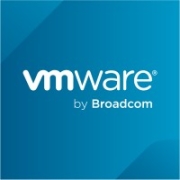Container Monitoring ensures a consistent observing and managing system for containerized applications, affording enterprises enhanced scalability and performance.
Enhancing reliability and security in application environments is critical, and Container Monitoring achieves this by offering comprehensive visibility into containerized workloads. The solution integrates seamlessly with container orchestration platforms like Kubernetes, detecting unusual activities and providing real-time insights, thus enabling effective troubleshooting and optimization.
What are some critical features?In industries like finance and healthcare, Container Monitoring is implemented to ensure compliance with regulations, protect sensitive data, and maintain high service quality. E-commerce platforms utilize it to manage traffic spikes during sales, ensuring uninterrupted customer experiences.
Container Monitoring helps organizations maintain seamless operations within their containerized environments, ensuring reliability and agility in application deployment and management.
| Product | Market Share (%) |
|---|---|
| Dynatrace | 33.1% |
| Datadog | 25.8% |
| Splunk AppDynamics | 16.3% |
| Other | 24.799999999999997% |



















A container management platform’s dashboard shows resource utilization metrics of all applications in the container and on the container’s host machine.
Container metrics allow administrators to evaluate at a high level whether a containerized system is performing as expected and to set up alerts when necessary. There are hundreds of metrics for each container, including memory status, network activity, and CPU. These metrics are used to gauge user experience. For example, knowledge of the percentage of requests that were successfully processed within a specific amount of time gives information on the reliability and speed of a service. metrics such as the number of container and network crashes can be useful for debugging.
Containerized environments are very dynamic and require close monitoring to maintain proper application health. Container observability and monitoring are essential for maintaining a smoothly running container environment and for optimizing container resource usage and costs.
Container monitoring tools allow users to easily build visualizations, allowing visibility into container infrastructure and applications. Container observability integrates tools for monitoring metrics, log query and collection, alerting, and notification.
Because each container image can have many running instances, and due to the rapid pace at which new images and versions are introduced, issues can easily spread through containers, their applications, and the entire container architecture. This makes it crucial to isolate the root cause of a problem as soon as it appears.
In large-scale containerized environments, container observability must be automated and is only possible using container monitoring tools.
Containers need management in order to enable the applications hosted on them to work more efficiently. In addition, containers need a management system when the number of containers on the system becomes too large for a single IT team to operate. With efficient container management, IT admins can easily keep their environments secure, enabling developers to enjoy the flexibility and ease of containers and allowing them to easily develop and deploy new apps and services.
A container management system automates the process of creating, deploying, and scaling of containers. Using a container management system simplifies the addition, removal, and management of containers on a large scale.
Container monitoring systems collect metrics to ensure that all the applications running on containers are performing as they should. Metrics are tracked and analyzed in real time to determine whether applications are fulfilling their expected requirements.
Integrating Container Monitoring into your CI/CD pipeline ensures immediate detection of issues during development and deployment stages. By continuously checking container performance, resource usage, and security, you can automate corrective actions before problems reach production. Tools like Prometheus and Grafana offer powerful integrations, providing real-time metrics and alerts that help streamline your DevOps processes.
What are the key metrics to track in Container Monitoring?For effective Container Monitoring, track metrics like CPU and memory usage, storage I/O, network traffic, and container status. Additionally, monitoring application-specific metrics and log outputs is crucial for diagnosing issues. Tools often provide dashboards to visualize these metrics in real-time, aiding in quick problem resolution and ensuring optimal performance of containerized applications.
Why is resource allocation important in Container Monitoring?Proper resource allocation in Container Monitoring is vital to avoid over-provisioning, which can drive up costs, or under-provisioning, which can lead to performance bottlenecks. By monitoring resource usage patterns, you can optimize the allocation of CPU, memory, and storage to meet application needs efficiently. This helps in maintaining high performance and cost-effectiveness across your containerized environments.
How do you ensure security in Container Monitoring?Ensuring security in Container Monitoring involves several practices such as continuously scanning for vulnerabilities, monitoring access logs, and ensuring compliance with security policies. Tools can automate these processes, providing alerts on suspicious activities and helping to patch vulnerabilities quickly. Integrating security into your monitoring strategy allows you to maintain a robust defense against threats in dynamic container environments.
What are the benefits of using open-source tools for Container Monitoring?Open-source tools for Container Monitoring offer flexibility, community support, and cost savings. Tools like Prometheus and Grafana provide robust capabilities for metric collection, visualization, and alerting. They can be adapted to specific needs and integrated with other open-source or proprietary tools, making them highly versatile solutions for managing and optimizing containerized workloads effectively.